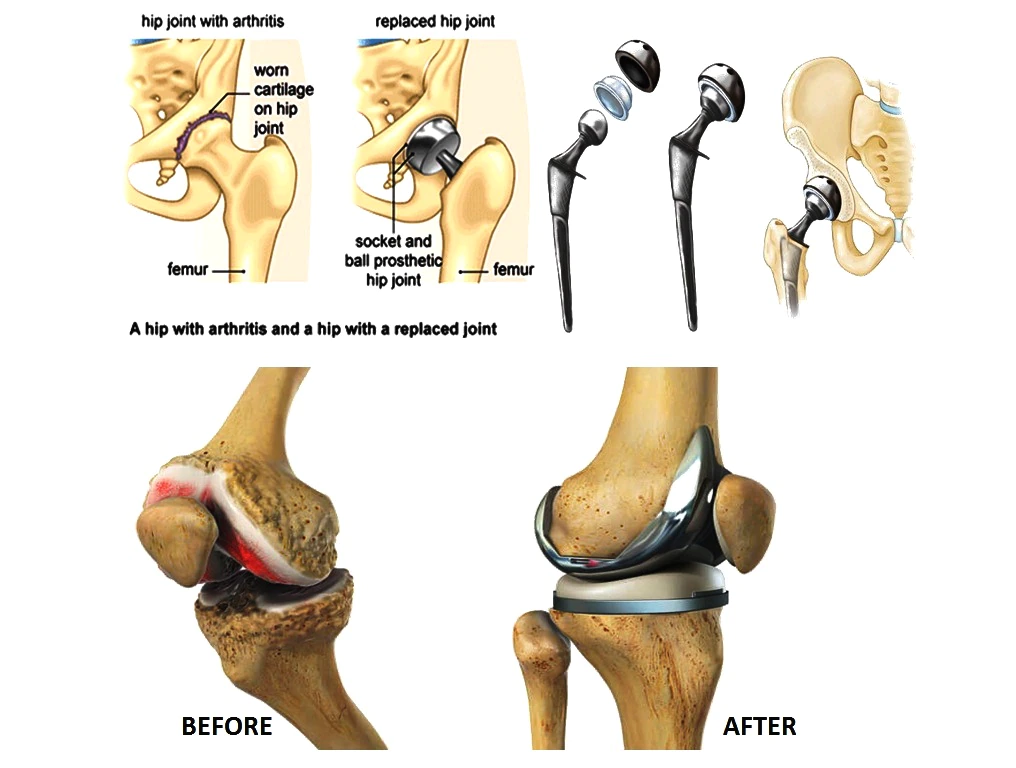
TKR. THR
Total Hip Replacement (THR):
The Surgical Process: During a THR procedure, the surgeon makes an incision to access the hip joint. The damaged bone and cartilage are then removed, and the artificial joint components, usually made of metal, ceramic, or durable plastic, are securely implanted. The new joint is designed to replicate the natural hip joint, allowing for smooth movement and reduced pain.
Total Knee Replacement (TKR):
The Surgical Process: During a TKR procedure, the surgeon removes damaged cartilage and bone from the knee joint and replaces it with an artificial joint. The prosthetic components, consisting of metal alloys and high-grade plastics, are carefully positioned to restore knee function and alleviate pain.
Recovery and Rehabilitation: After joint replacement surgery, a comprehensive rehabilitation program is essential for successful recovery. Physical therapy and exercises are typically initiated soon after surgery to restore joint strength, improve range of motion, and regain functional mobility. Patients are encouraged to follow post-operative care instructions, which may include pain management techniques, wound care, and precautions to prevent complications.
